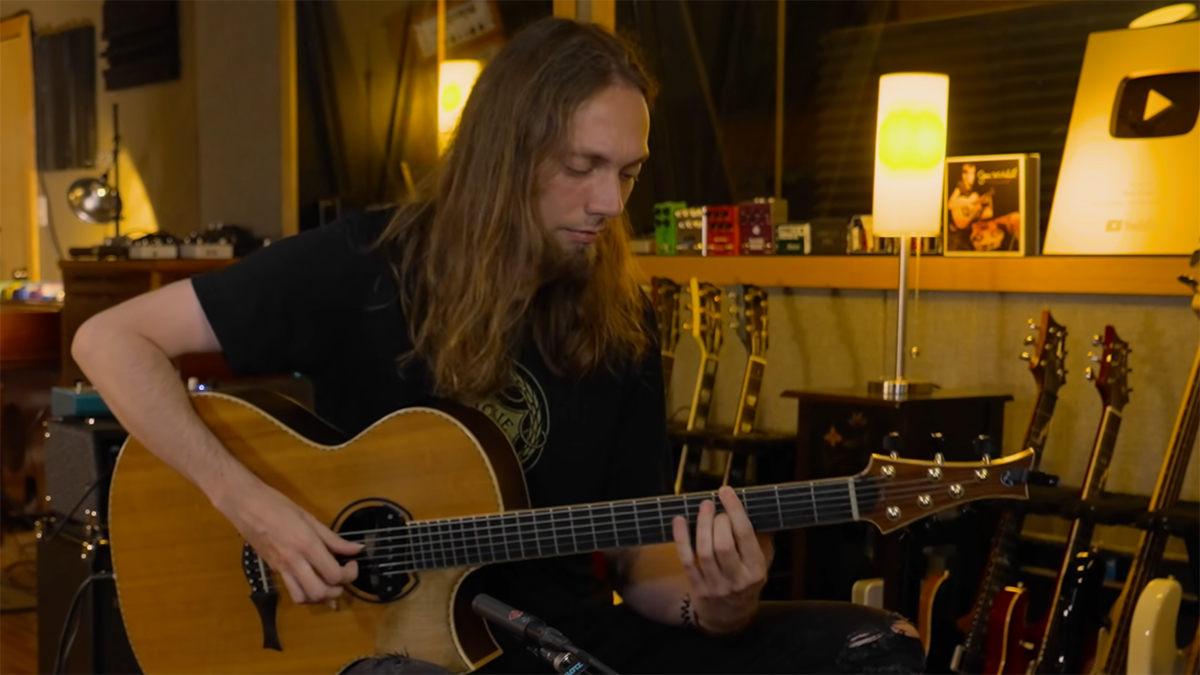
Mike Dawes, one of today’s most foremost fingerstyle players, is certainly no stranger to turning classic electric guitar-driven rock tracks into awe-inspiring acoustic guitar-based masterpieces by way of his pinpoint dual-handed playing approach and exquisite note clarity.
In the past, we’ve seen Dawes tackle Eddie Van Halen’s Jump – a cover he arranged as a touching tribute to the late guitar great – as well as John Mayer’s Slow Dancing In A Burning Room, which he performed with Nick Johnston.
Now, the stripped-back six-string virtuoso has offered up another astonishing arrangement, this time utilizing all his licks and tricks to transform Bob Dylan’s All Along The Watchtower.
It’s a Dawes arrangement, so of course, the word “stunning” doesn’t do it justice. Sonically speaking, it takes cues from Jimi Hendrix’s high-octane version, yet guides it in an entirely different direction, swapping out the electrifying main riff for some open-string-decorated chord changes.
Hendrix’s voice becomes some ethereal, gorgeously compiled upper-string melodies, while some customary percussive hits – a pounding left hand fist on the body and a fleeting tap on the guitar’s underbelly – add even more color and nuance.
As previously mentioned, words really don't really do Dawes's performance justice, so it's probably best if you just watch it for yourself in the video above.
The acoustic-wielding maestro, who includes the cover in his live sets, performed in the company of Rick Beato, who went on to quiz Dawes over his previous arrangement projects, and how he goes about crafting his dizzying renditions
All the latest guitar news, interviews, lessons, reviews, deals and more, direct to your inbox!
Of his surgical approach to arranging, Dawes said – using Jump as an example – “The actual process starts with the tuning. The tuning I’m in right now is DADGAD.
“When I’m trying to create this thing, I’m usually looking for a few features on the tuning,” he continued. “I love to have a powerchord in the bass. So I love to have a root and a five. I also like to have resonant strings as fifths, fourths or octaves, because when you’re trying to fill some space you can use the open strings to your advantage.”
When pressed on how he curates his tapping rhythmic passages, Dawes added, “I’m trying to get the syncopated percussion part, because that’s what Alex Van Halen was doing, and I don’t have enough hands to keep the full drum thing going, so I imply the important bits.
“It’s all about what hand is available at what point. It’s all about economy of movement.”
Other notable points that will be of interest to aspiring fingerstyle players is the important of register consistency – “If your vocal is on the top strings, it needs to stay there” – as well as how to incorporate more percussive elements.
“The way I’ve always liked to do it is by incorporating the percussive elements with this [right] hand,” he explains. “It’s these little micro movements, and when they become natural, you can integrate them with improvisation.”
Anyone else reaching for their acoustic to tap away in the hope of coming up with something remotely passable as a Dawes-style rendition? If you fancy a bit more guidance from the man himself, head over to Mike Dawes's official website.

Matt is the GuitarWorld.com News Editor, and has been writing and editing for the site for five years. He has a Masters in the guitar, a degree in history, and has spent the last 19 years playing everything from blues and jazz to indie and pop. During his GW career, he’s interviewed Peter Frampton, Zakk Wylde, Tosin Abasi, Matteo Mancuso and more, and has profiled the CEOs of Guitar Center and Fender.
When he’s not combining his passion for writing and music during his day job, Matt performs with indie rock duo Esme Emerson, and has previously opened for the likes of Ed Sheeran, Keane, Japanese House and Good Neighbours.


